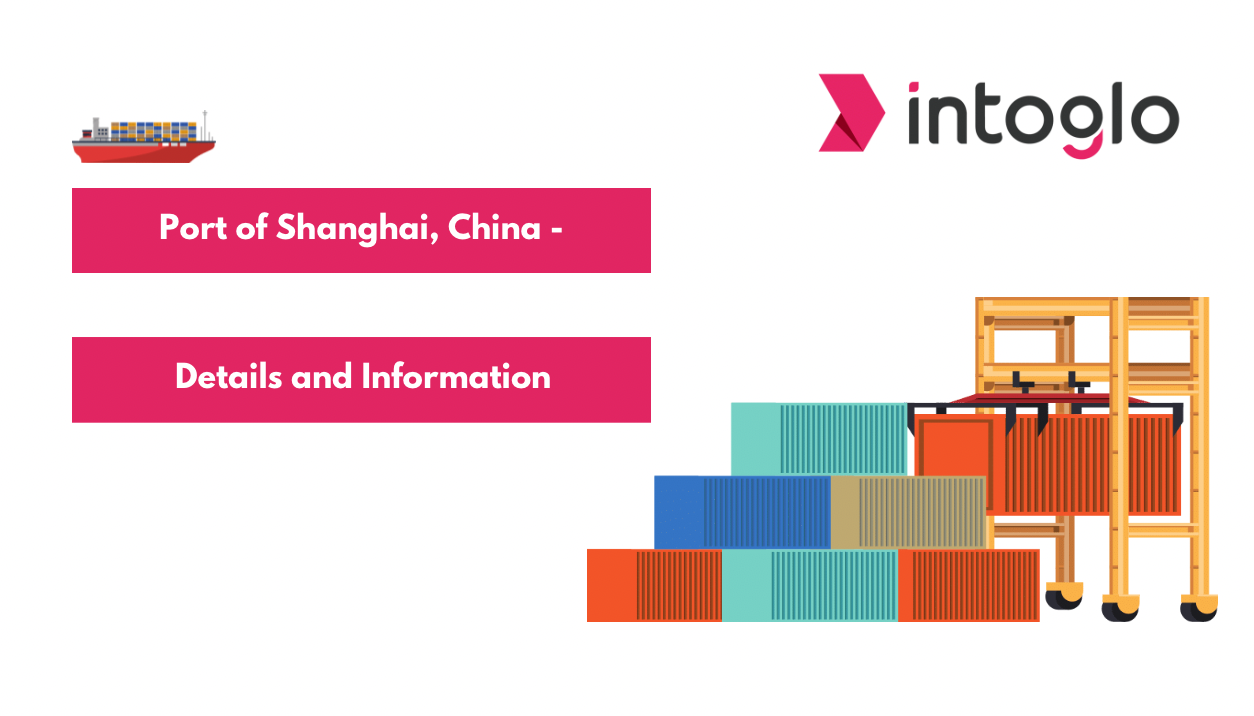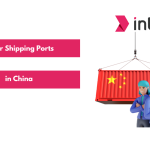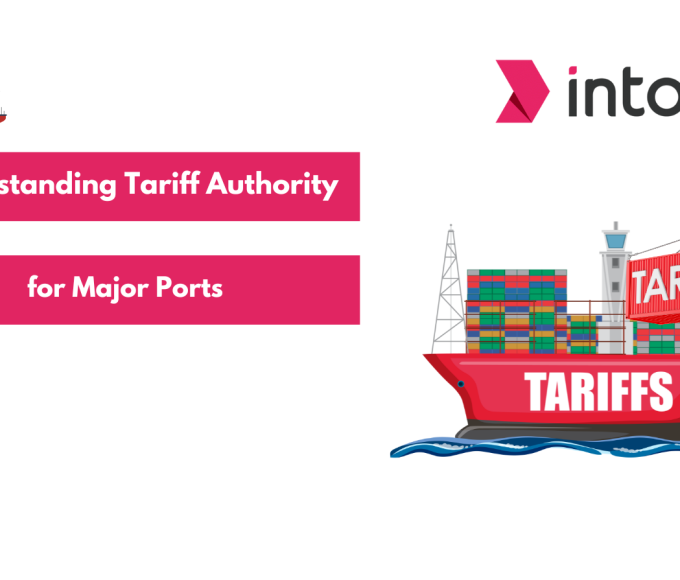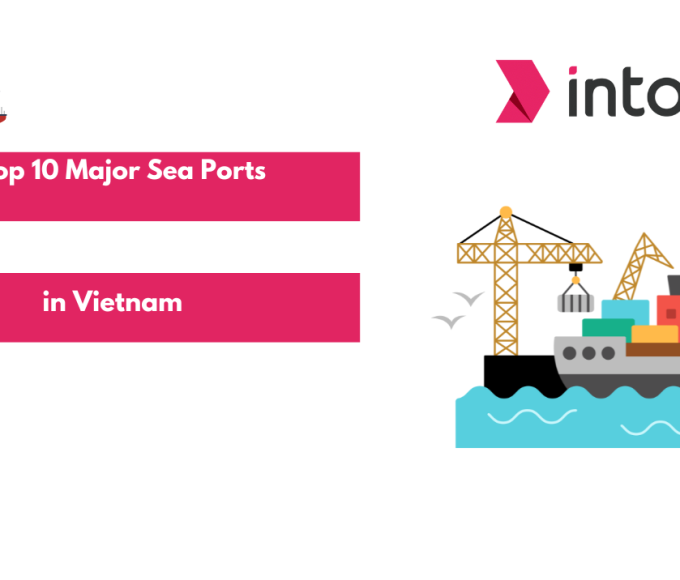The Port of Shanghai is a vital component of the global shipping industry, recognized for its vast scale and high level of efficiency. As the busiest container port in the world, it plays a key role in supporting global trade and economic development. Located at the mouth of the Yangtze River, the port spans more than 3,500 square kilometers and includes several important areas, such as the Waigaoqiao, Yangshan Deep Water Port, and Wusongkou terminals.
The strategic importance of the Port of Shanghai in global trade is significant. With an annual handling capacity of over 49 million twenty-foot equivalent units (TEU), the port manages the transportation of a wide range of goods, from consumer electronics to raw materials. Businesses across the globe rely on the Port of Shanghai for the efficient and cost-effective movement of goods.
This article will provide a detailed overview of the Port of Shanghai, covering its key terminals, operational capabilities, and its essential role in international trade. We will also examine the port’s infrastructure, technological advancements, and future growth potential, offering a thorough understanding of its position as the leading port in the world.
Source: Statista
Port of Shanghai Historical Background and Geographical Location
The Port of Shanghai has a rich and storied history. Initially a modest fishing village, Shanghai’s transformation began in the mid-19th century when it was opened to foreign trade following the First Opium War.
The establishment of the Shanghai International Settlement marked the beginning of its growth into a major trading port. Throughout the 20th century, significant investments in infrastructure and technology propelled the port into the global spotlight. Today, the Port of Shanghai stands as a testament to China’s rapid economic development and its pivotal role in global commerce.
Position on the Yangtze River Delta
The Port of Shanghai is strategically located on the Yangtze River Delta in China. This prime location offers direct access to the Yangtze River, the longest river in Asia, which serves as a major conduit for trade.
The Yangtze River Delta covers merely four percent of China’s land area, yet it holds substantial economic significance. In 2023, the region’s GDP exceeded 30 trillion yuan, equivalent to over 4.14 trillion US dollars, representing more than 24 percent of China’s total GDP.
The port’s location here benefits from an extensive network of inland waterways, which facilitate the movement of goods to and from the interior regions of China.
Significance of Its Location
The strategic location of the Port of Shanghai plays a crucial role in its global success. Positioned at the intersection of vital maritime and riverine routes, the port serves as a key gateway between China and international markets.
- Global Connectivity: The port’s location at the mouth of the Yangtze River allows it to connect seamlessly with major global shipping routes, facilitating the swift movement of goods between China and key markets in North America, Europe, and Asia.
- Boosting Trade Efficiency: The port’s strategic position reduces transit times and shipping costs, enhancing the efficiency of global supply chains and making it a preferred choice for international trade.
- Economic Growth: The port’s location contributes significantly to China’s economic development, driving growth in the Yangtze River Delta region and beyond by attracting investment and creating jobs.
Its position on the Yangtze River Delta, proximity to key waterways, and strategic significance underscore its critical role in connecting China to the world.
In the next section, we will explore the Port of Shanghai’s infrastructure, highlighting its advanced facilities and capabilities.
Looking for a door-to-door FCL Shipment from India to the USA? Get a Quote now!
Port of Shanghai Infrastructure
The Port of Shanghai is equipped with state-of-the-art infrastructure that supports its status as the world’s busiest container port. From its extensive terminals and advanced container handling systems to its cutting-edge technologies, the port is designed to efficiently manage high volumes of diverse cargo. This infrastructure ensures seamless operations, driving the port’s high throughput and global competitiveness. Below, we highlight the key components that make the Port of Shanghai a critical hub in international trade.
- Terminals and Dock Facilities:
- Major terminals: Waigaoqiao, Yangshan Deep Water Port, Wusongkou Terminal.
- Equipped with deep-water berths to accommodate the largest container ships.
- Container Handling Capabilities:
- 43 container terminals and 191 berths.
- 156 container cranes, capable of handling the largest ships, including the Maersk Triple E class (up to 18,000 TEUs).
- 24/7 operations with automated systems ensuring efficient turnaround and high throughput.
- Warehouse and Storage Facilities:
- General and specialized storage, including refrigerated warehouses and secure facilities for hazardous materials.
- Seamless integration of sea, road, and rail transport for efficient cargo handling.
- Port Equipment and Technologies:
- Use of automated cranes, AGVs, and smart port management systems.
- Investment in green technologies, including electrification of equipment and shore power systems for sustainability.
This advanced infrastructure supports the Port of Shanghai’s role as the busiest and most efficient container port globally.
Operations and Management
The Port of Shanghai is not only renowned for its state-of-the-art infrastructure but also for its efficient and well-coordinated operations and management practices. Let’s explore the critical aspects of its daily operations, management structure, security measures, and environmental management practices.
Daily Operations
The daily operations at the Port of Shanghai are a testament to its efficiency and capacity. The port operates 24/7 to manage the high cargo volume passing through its terminals. The operations involve the seamless coordination of loading and unloading ships, container handling, warehousing, and transportation logistics.
Port Management Structure
The port is managed by the Shanghai International Port (Group) Co., Ltd (SIPG), which oversees all aspects of port operations, including logistics, infrastructure development, and strategic planning.
The management team is divided into several departments, each responsible for different operational areas, such as container handling, warehousing, and security. This hierarchical structure ensures that all activities are well-coordinated and that the port’s strategic objectives are met efficiently.
Security Measures
Security is a paramount concern at the Port of Shanghai, given the high value and volume of cargo handled daily. The port employs a comprehensive security framework that includes physical security, surveillance systems, and cybersecurity measures.
Physical security involves access control, perimeter fencing, and regular patrols by security personnel. Surveillance systems include CCTV cameras, motion detectors, and automated monitoring systems to ensure continuous surveillance.
Additionally, cybersecurity measures protect the port’s digital infrastructure from cyber threats, ensuring the safety and integrity of data. The port also complies with international security standards, such as the International Ship and Port Facility Security (ISPS) Code, to maintain a secure environment for global trade.
Environmental Management Practices
The Port of Shanghai is committed to sustainable operations and has implemented various environmental management practices to minimize its ecological footprint. These practices include reducing emissions, managing waste, and conserving energy.
Also Read: Benefits and Types of Export Finance
Connectivity and Transportation Network
The Port of Shanghai’s extensive connectivity and transportation network is vital to its efficiency and global significance. Let’s explore how the port’s intermodal transport links, rail and road connections, and integration with major trade routes contribute to its success.
Intermodal Transport Links
The Port of Shanghai is seamlessly integrated into a vast intermodal transport network, allowing for the efficient transfer of goods between sea, road, rail, and air transport.
This integration ensures cargo can move quickly and smoothly from the port to its final destination, whether within China or globally. The port’s intermodal capabilities reduce transit times, lower transportation costs, and enhance the overall efficiency of the supply chain.
With dedicated intermodal terminals, the port can handle large volumes of cargo transfers, ensuring that goods reach their destinations without unnecessary delays.
Rail and Road Connections
Rail and road connections are crucial to the Port of Shanghai’s transportation network. The port is integrated into an extensive network of highways and railways that link it to major cities and industrial centers across China, ensuring efficient movement of goods.
Rail Connections
The Port of Shanghai connects several key railways, including the Beijing-Shanghai High-Speed Railway, the Shanghai-Kunming Railway, and the Shanghai-Nanjing Intercity Railway.
These rail links provide swift and reliable transportation for cargo, allowing goods to be moved quickly to major economic hubs such as Beijing, Nanjing, and Kunming.
The rail network also connects the port to inland regions, facilitating the efficient transfer of goods to and from the interior of China.
Road Connections
The port is well-served by a network of highways that facilitate the efficient movement of goods by road. Key highways include the G2 Beijing-Shanghai Expressway, the G15 Shenyang-Haikou Expressway, and the G60 Shanghai-Kunming Expressway.
These highways connect the port to major cities such as Beijing, Hangzhou, and Suzhou, as well as other important industrial and commercial centers. The well-maintained road network ensures that goods can be transported swiftly across the country, making the Port of Shanghai a central hub for domestic distribution.
These rail and road networks also connect the port to other major ports and logistics centers, such as the Port of Ningbo-Zhoushan and the Port of Tianjin. This enhances the Port of Shanghai’s role in both national and international supply chains, ensuring that goods can be efficiently transported to various parts of China and beyond.
Connection to Major Trade Routes
The Port of Shanghai’s location at the crossroads of major global trade routes further enhances its importance in international trade.
The port provides direct access to key maritime routes, including those that connect Asia with Europe, North America, and other parts of the world. This strategic position allows the port to serve as a critical gateway for goods entering and leaving China. The port’s connection to these major trade routes ensures that it remains a vital link in the global supply chain, enabling efficient and cost-effective transportation of goods to and from some of the world’s largest markets.
In the next section, we will examine the economic impact of the port on China.
Also Read: International Ship and Port Facility Security Code
Economic Impact
The Port of Shanghai plays a significant role in both the local and national economy of China. Its operations contribute to economic growth, job creation, and the overall trade balance of the country. Let’s explore the various aspects of its economic impact.
Contribution to Local Economy
The Port of Shanghai is a major driver of the local economy, particularly in the Yangtze River Delta region. The port generates substantial revenue through its shipping, logistics, and warehousing services, which, in turn, stimulates economic activity in related industries such as manufacturing, retail, and transportation.
In 2022, the port’s operations contributed significantly to Shanghai’s GDP, with the city being one of China’s leading economic powerhouses. The port’s activities have also attracted foreign investment, further boosting the local economy and enhancing Shanghai’s status as a global financial and trade center.
Employment Generation
The Port of Shanghai is a critical source of employment in the region, directly and indirectly supporting millions of jobs. The port itself employs a vast workforce, including dockworkers, logistics professionals, and administrative staff.
Additionally, the port’s operations create numerous jobs in related sectors such as shipping, transportation, and manufacturing. The port is estimated to employ over 13,000 people directly, with many more employed indirectly through associated industries.
Impact on China’s Trade Balance
As the busiest container port in the world, the Port of Shanghai profoundly impacts China’s trade balance. The port handles a significant portion of the country’s exports and imports, playing a crucial role in facilitating international trade.
By efficiently processing large volumes of cargo, the port helps to boost China’s export capacity, contributing to a positive trade balance. In 2024, the port’s operations were instrumental in supporting China’s trade surplus, which exceeded $3.46 trillion. The port’s ability to handle such high volumes of trade efficiently is essential in maintaining China’s position as one of the leading global exporters.
In the next section, we will delve into the technological challenges at the Port of Shanghai.
Also Read: Understanding Reefer Container: Dimensions, Cost and Working
Technology and Innovations
The Port of Shanghai is at the forefront of technological advancements, constantly integrating new technologies to enhance its efficiency and maintain its status as the world’s busiest container port. Let’s explore the key areas where technology and innovation are driving the port’s success.
Use of Automation and AI
Automation and Artificial Intelligence (AI) are pivotal in the operations of the Port of Shanghai. Automated Guided Vehicles (AGVs) are extensively used to transport containers between ships and storage areas without human intervention. These AGVs are guided by AI-powered systems that optimize routes and minimize delays.
Furthermore, AI algorithms are employed to manage and predict cargo flows, ensuring that resources are allocated effectively to meet demand. This level of automation not only speeds up operations but also enhances safety by reducing the need for manual labor in hazardous environments.
Digitalization in Port Operations
Digitalization is another key component of the Port of Shanghai’s operations. The port has implemented a comprehensive digital management system that integrates all aspects of port operations, from cargo tracking to customs clearance. The use of digital twin technology, which creates a virtual replica of the port, enables operators to simulate different scenarios and optimize operations accordingly.
Additionally, blockchain technology is being utilized to enhance transparency and security in supply chain management, ensuring that all transactions are traceable and tamper-proof.
Innovations in Cargo Handling
The Port of Shanghai is also leading the way in innovations related to cargo handling. The port has developed advanced cranes and automated container handling systems that significantly reduce the time it takes to load and unload ships.
These innovations include remote-controlled cranes that allow operators to manage cargo handling from a central control room, improving precision and reducing the risk of accidents.
Moreover, the port has introduced smart containers equipped with IoT (Internet of Things) devices that monitor the condition of goods in real time, providing valuable data on temperature, humidity, and security.
Challenges and Future Development
The Port of Shanghai, while a global leader in port operations, faces several challenges that could impact its future growth. However, ongoing expansion plans and strategic development initiatives aim to address these challenges and secure the port’s position as a key player in international trade. Let’s explore these aspects in detail.
Current Challenges
Despite its success, the Port of Shanghai encounters several challenges that require ongoing attention. One of the primary issues is congestion due to the sheer volume of cargo it handles. With over 49 million TEUs processed annually, the port must constantly innovate to manage high traffic levels and prevent delays.
Additionally, environmental concerns are increasingly prominent, as the port’s operations contribute to air and water pollution. Managing emissions and minimizing the environmental impact of port activities is a growing challenge that necessitates the adoption of greener technologies.
Furthermore, global trade disruptions, such as those caused by pandemics or geopolitical tensions, pose significant risks to the port’s operations, requiring adaptive strategies to maintain stability.
Expansion Plans
To address these challenges and accommodate future growth, the Port of Shanghai has embarked on several expansion projects.
- The Yangshan Deep Water Port, one of the key terminals, is undergoing significant expansion to increase its capacity and enhance its ability to handle mega-ships.
- This expansion includes the addition of new berths, automated container yards, and advanced cargo handling equipment.
- Furthermore, the port is investing in the development of new logistics zones and warehousing facilities to support the increased flow of goods. These expansions are designed to alleviate congestion, improve efficiency, and support the port’s role as a global trade hub.
Future Prospects and Development Strategies
Looking ahead, the Port of Shanghai is focused on several strategic initiatives to ensure its continued growth and relevance in the global trade landscape. A key aspect of its future development strategy is the adoption of smart port technologies, including the increased use of AI, big data, and IoT to optimize operations.
The port is also exploring the potential of green energy solutions, such as wind and solar power, to reduce its carbon footprint and meet international environmental standards.
Additionally, the port aims to strengthen its integration with the Belt and Road Initiative, expanding its reach into new markets and enhancing connectivity with other major ports across the globe. These strategies are designed to position the Port of Shanghai as a sustainable, technologically advanced, and resilient leader in global trade.
Conclusion
The Port of Shanghai stands as a testament to China’s remarkable growth and its pivotal role in global trade. With its advanced infrastructure, strategic location, and commitment to innovation, the port has become the busiest container port in the world, driving economic growth and facilitating seamless global trade connections.
As businesses increasingly rely on efficient and cost-effective supply chains, the role of reliable logistics partners becomes even more critical. Intoglo provides comprehensive doo-to-door FCL cross border shipment, ensuring efficient and secure shipments from India to the USA.
Explore Intoglo’s services today and discover how we can help you optimize your supply chain and achieve your business goals.









Leave a comment